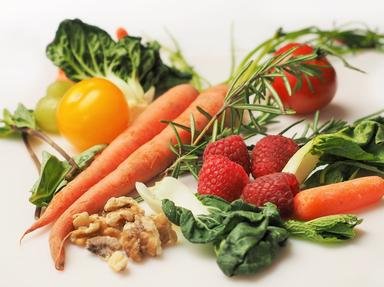Quiz Answer Key and Fun Facts
1. It looks like a white version of its smaller relative, the carrot, but has a sweeter taste. Which root vegetable is this?
2. It is round and a purplish-red colour, and can be enjoyed raw or pickled. It is also the key ingredient of borscht, a soup popular in Eastern Europe. What root vegetable is it?
3. Scientists know it as Brassica rapa, and cooks know it as a round white vegetable with a purplish tinge and edible leaves. There is a British fairy tale involving an old woman pulling a giant one out of the ground. Which root vegetable is this?
4. Its English name sounds like a term of endearment. The most common variety has orange skin, though some varieties are yellow, red or even purple, and Americans may find it on their Thanksgiving tables. Which root vegetable is this?
5. Its skin is purple and yellow, it's a cross between a turnip and a cabbage, and its leaves are edible. In the US and Canada, it is known as a rutabaga, but what Scandinavian-sounding name is this root vegetable also known by?
6. It is the root of a plant with white flowers. Grate it, and you'll discover that it tastes very bitter! Which root vegetable is this?
7. This ugly vegetable originated in the Mediterranean, is covered in bumps, and it can be used as a thickener in soups. Despite its name, it is not actually long and green. Which root vegetable is this?
8. This one is a bit trickier. This vegetable is a staple of Japanese cuisine, and it is also known as mooli, lo bok, or white radish. Some varieties are shaped like carrots, and others like turnips. Which root vegetable is this?
9. Its Latin name is Manihot esculenta, and it is also known as yuca, manioc and balinghoy. It is a hardy plant which can grow in harsh conditions, and a staple food in parts of Africa, Southeast Asia and Central and South America. Which root vegetable is this?
10. Fried, mashed, boiled, sauteed, chipped, roast, baked...there are so many ways of cooking this tuberous vegetable. You can find it in snack-sized bags, in cartons at a fast food restaurant, or covered in cheese and beans (or whatever else your topping of choice might be). Which vegetable, with a Latin name of Solanum tuberosum, is this?
Source: Author
Kankurette
This quiz was reviewed by FunTrivia editor
WesleyCrusher before going online.
Any errors found in FunTrivia content are routinely corrected through our feedback system.


